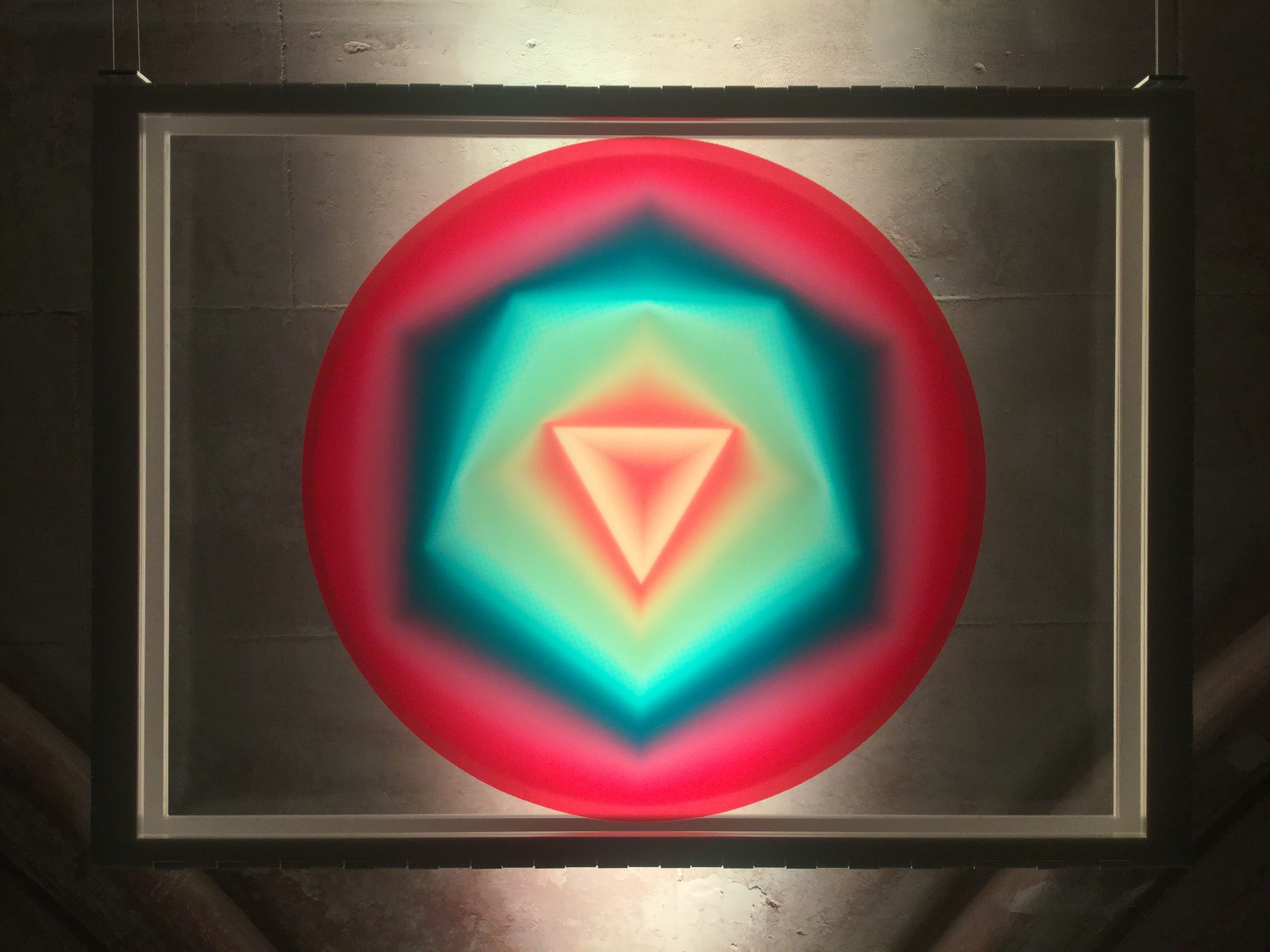Physically, this work consists of two acetate prints, layered and backlit by cycling colours. Functionally, it is a clock. At any given time, the colour shone on it illuminates specific areas of the prints and mutes others, revealing a shape unique to the point in the cycle. In other words, the frequency of the light contains information about time, and the prints give this information a form and 'tells' time.
Unlike other clocks, this clock does not unitise time. The mechanical clock is a device concerned with the future; there is always a higher-order function to looking at a clock, namely to manage our time. It separates time from our experience of it here, now. This work seeks to return the experience of seeing time, and perhaps forgetting time, to the viewer.
This work is concerned with time and form. According to Marshall McLuhan, light is “pure information” – in this case, the frequency of the light contains information about time, and the print gives that information a form, and ‘tells’ time.
This clock does not adhere to conventional units of time. Other clocks try to predict and manage our time, but this clock is more interested in the very process of describing time. So take your time seeing time.

Keita Ikeda is a creative technologist working with light, physical materials and computer programming to explore visual perception, form and materiality. They seek to design alternative mediums of artistic expression, and finds beauty not only in the content of a work, but in the very process of information materialising through a medium. They see computation as a fundamental element in their practice, not merely as a tool but a material in its own right, like paint for a painter.
